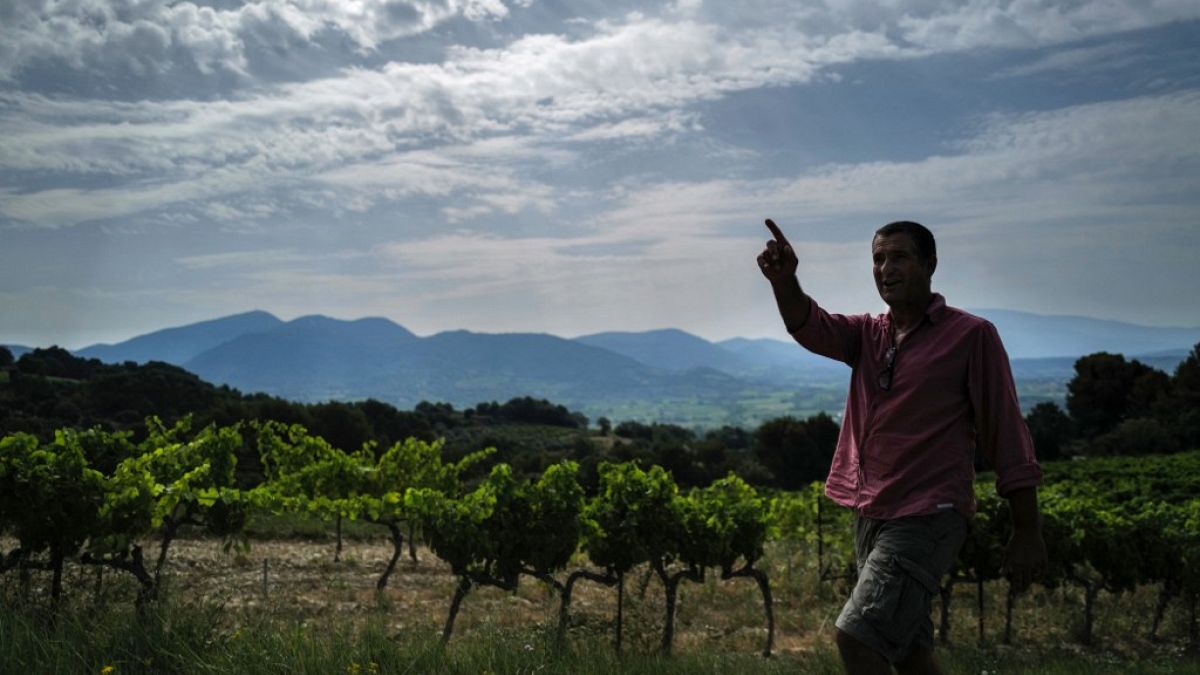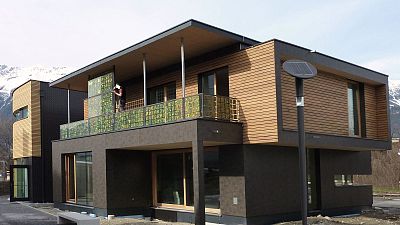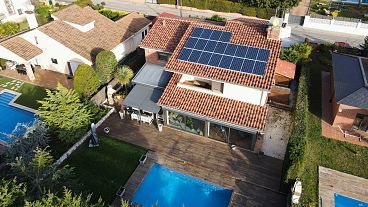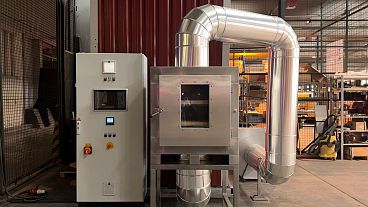This French winemaking commune utilises oak and olive trees to preserve biodiversity and mitigate climate impacts.
In the picturesque hills of Vinsobre in southeastern France, winemakers are using biodiversity to help cushion their vineyards from climate change.
A wine appellation - or ‘protected designation of origin’ - is all important, as drinkers savour the tasting notes of its particular surroundings.
For decades, this wine appellation in the Drôme region has embraced a unique approach, preserving both its ecological diversity and the quality of its wines.
Vines, olive trees and oaks grow together in a system known as 'vitiforesterie'. It has become a beacon of sustainability, drawing admiration from environmentalists and wine enthusiasts alike.
How do trees play a role in mitigating climate impacts for vineyards?
In Anaïs Vallot's vineyard, imposing oak trees encircle and shade the first vines, providing "a little breath of fresh air" during the summer heat.
The pines, oaks and hedges that surround the vines "temper the excesses of the climate,” explains Cédric Guillaume-Corbin, a 'farmer-winemaker' at another estate, La Péquélette.
They can cut off the wind, limit frost and "provide a certain coolness when it's very hot", like a parasol, he says.
"The proximity of a wooded border has an impact on fields up to 100 metres away," in terms of biodiversity, soil life and temperature, he adds. That's a considerable advantage in an area that suffers from repeated heatwaves.
In 1993, the Vinsobres winegrowers' committee decided in agreement with the municipality to transform its 1,238 hectares of woodland into non-buildable zones and classified wooded areas.
"It's just good farming sense," explains 72-year-old Jean-Louis Piallat, chairman of the committee at the time. "We always thought that monoculture didn't work and that biodiversity was essential [to preserve the] typicality of the wine".
In addition to the botanical diversity provided by the holm and truffle oaks, the higher trees - perched at an altitude of 500 metres - limit erosion and run-off during storms.
How does Vinsobres' ‘vitiforesterie’ contribute to a greener future in winemaking?
Vitiforestry is now making a comeback as part of a wider turn towards agroecological farming. More and more winegrowers are taking care to reintroduce tree species suited to their soil.
"The vineyard is a whole ecosystem, a landscape: we're not here just to harvest grapes," says Anaïs Vallot, bending over a vine whose berries are starting to turn from green to white.
These practices "create constraints in terms of mechanical work, but it's a choice", even if it means producing a little less, says Guillaume-Corbin. He is "convinced" that this diversity can be felt in the aromas of his wines.
"Wine tells the story of the land and the place where it was born," he says. "If you're in a place with trees, butterflies and birds, and not a sea of vines choking you, it won't tell the same story".



